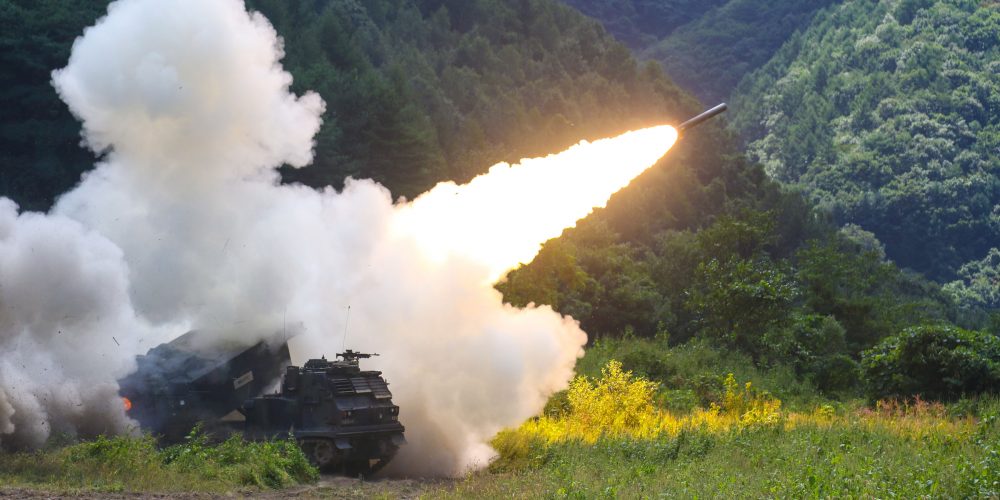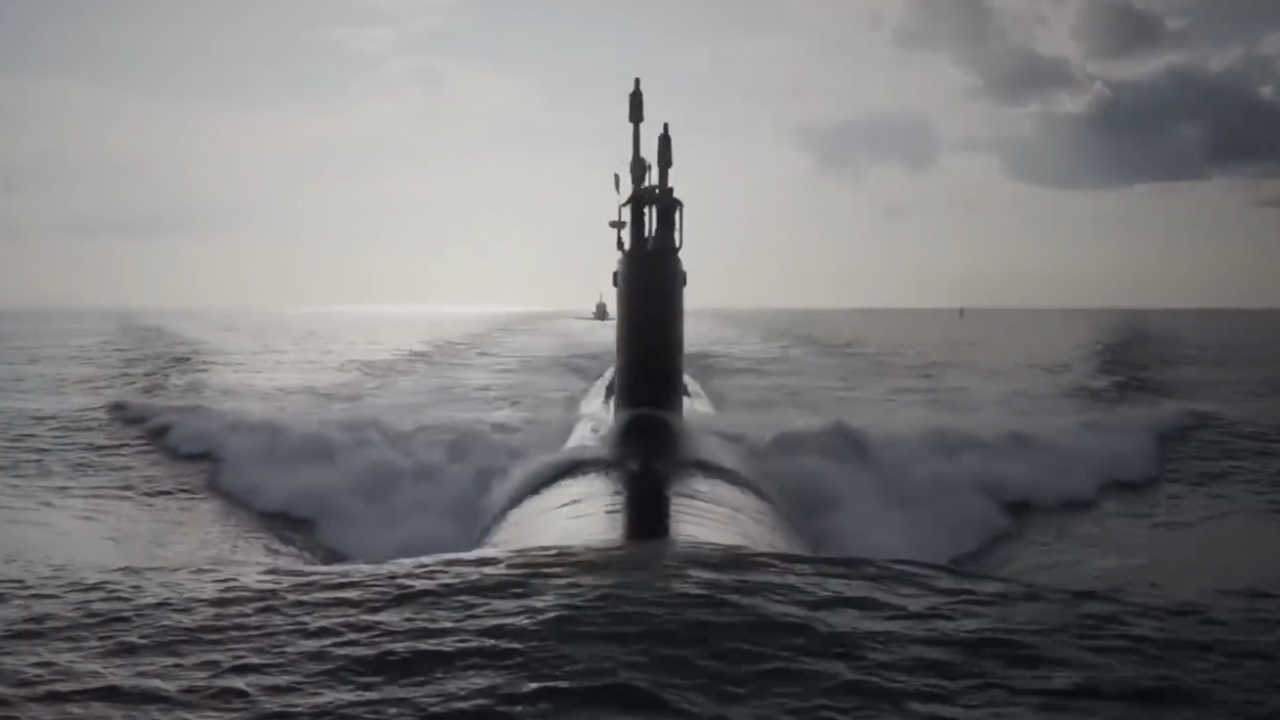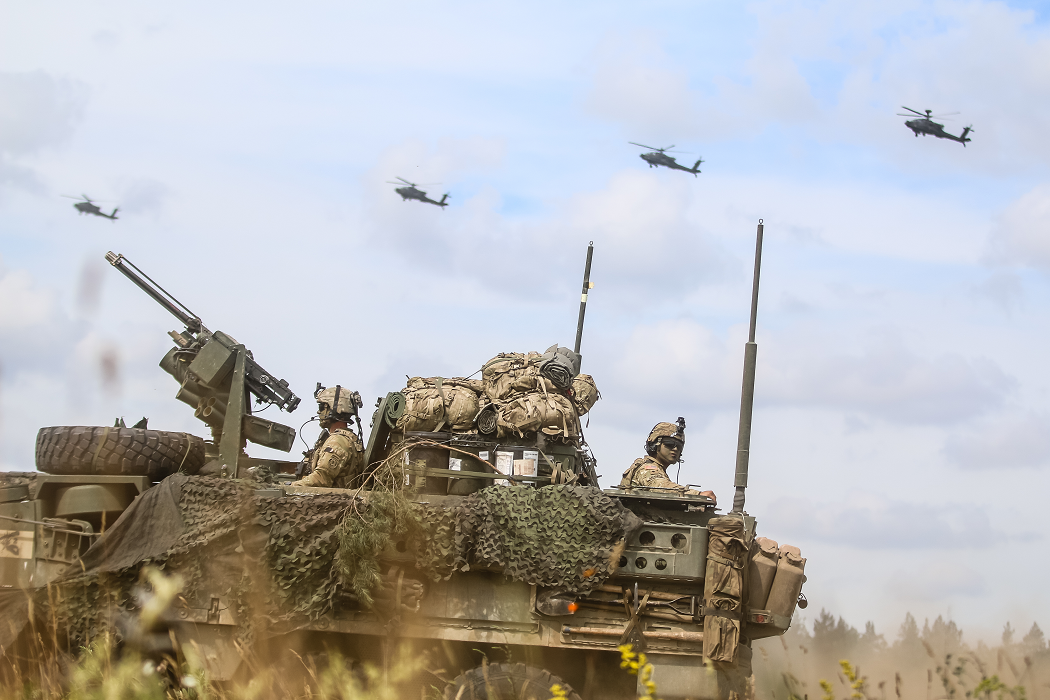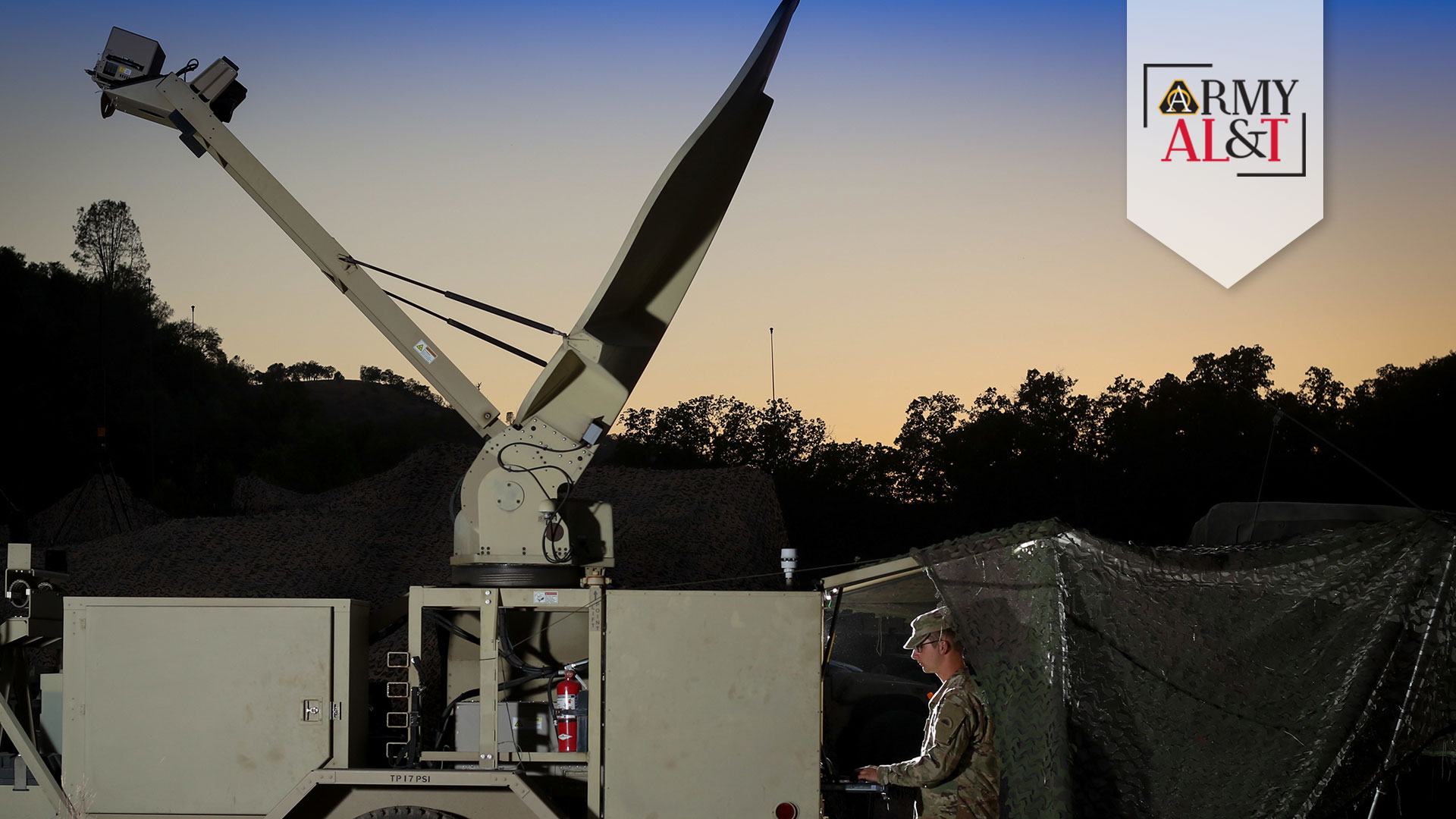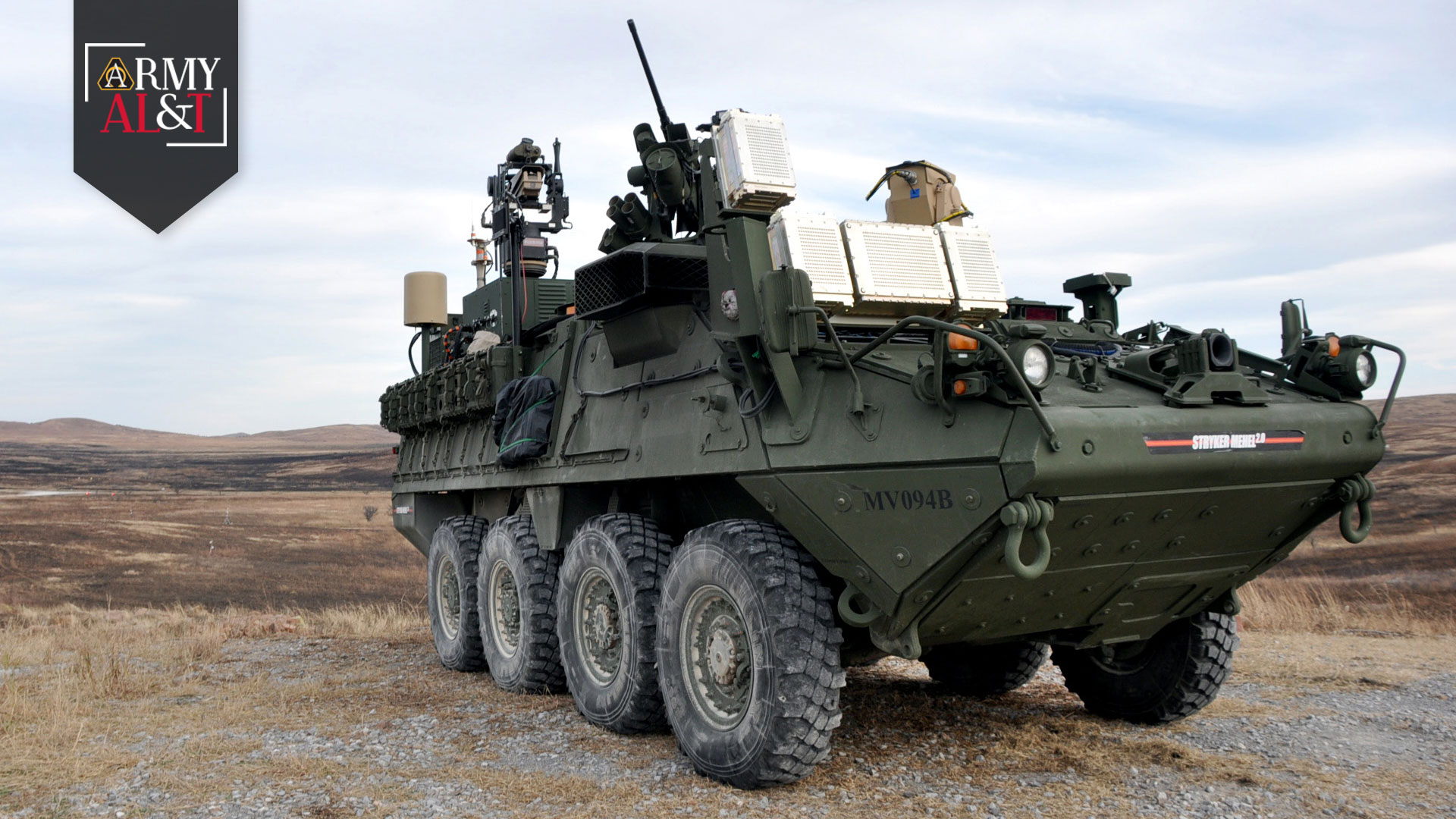Then & Now
1991 & 2018
Ms. Mary Kate Aylward
With ATACMS having been surpassed by Russia and China, the U.S. doesn’t just want to catch up, it wants to dominate.
Restoring the United States’ dominance in long-range precision fires tops the list of six modernization priorities released by Army Chief of Staff Gen. Mark A. Milley and then-acting Secretary Ryan D. McCarthy in October. If you could go back in time and tell readers of this magazine’s predecessor in the early 1990s that this would be the case—that, 20 years later, the Army had lost its edge in long-range missiles, and to Russia, no less—they probably would have been surprised.
Then, the United States was the last superpower left standing, and the long-range, precise missiles that let it strike important targets far behind enemy lines were a crucial part of establishing its military superiority in the post-Cold War order. Now, as Maj. Gen. Cedric T. Wins acknowledged at the 2017 Association of the United States Army (AUSA) annual meeting, the United States could be “outranged and outgunned” by adversaries.
The Army Tactical Missile System, or ATACMS, was the Army’s first long-range tactical missile. It debuted in 1986 to attack high-value targets like airfields, artillery and missile forces, supply areas and command groups. ATACMS helped the United States and its allies to quick victory in Operations Desert Shield and Desert Storm. Then-Army Acquisition Executive Stephen K. Conver described ATACMS’ performance in Operation Desert Storm in the May-June 1991 issue of Army RD&A Bulletin (this magazine’s predecessor): “The system was used against surface-to-air missile sites, logistics sites, Scud [missile] positions, howitzer and rocket batteries, and tactical bridges” and was viewed as a precious asset. “Indications are that ATACMS destroyed, or rendered inoperable, all of its targets.”
The first iteration of ATACMS could hit stationary surface targets up to 100 miles away. The second generation, Block 1A, added GPS guidance for more precision and had a range of 165 to 185 miles. Ground commanders of land-based units didn’t have access to that kind of range before ATACMS; the Lance missile that ATACMS replaced had a maximum range of 46 miles when fitted with a conventional warhead, but it had been intended primarily to deliver nuclear warheads.
The program was canceled in the 1980s. Later, defense analysts would recognize the technological developments that ATACMS capitalized on as the “second offset,” when precision guidance, coupled with stealth technology, set the U.S. military far out of any competitors’ reach.
Then, after a decade of unquestioned military superiority, the United States and its allies got involved in two wars and eventually two counterinsurgencies in which artillery was less important and consequently received less attention and money. During that time, Russia and China, in the course of becoming the near-peer adversaries the Army has since refocused on, both developed long-range weapons that, coupled with their electronic warfare and intelligence capabilities, shift the battlefield advantage in their favor. ATACMS is now 30 years old, bulky and not as modular as current requirements demand, and the technologies that were breakthroughs 30 years ago have proliferated widely. Thus, Milley and McCarthy’s call for “a long-range precision fires capability that restores U.S. Army dominance in range, munitions and target acquisition.”
POINTING IN A NEW DIRECTION
The new M57A1 Army Tactical Missile System missile is fired over the cab of an M142 High Mobility Artillery Rocket System launcher. New battle conditions call for the Army to have precision lethal and nonlethal fires that can be fired from land to produce effects in all domains, as joint, multidomain operations are expected to be increasingly common. (U.S. Army photo)
In other words, the U.S. doesn’t want to just catch up, it wants to leap ahead.
The future demands it. The new paradigm of multidomain battle calls for the Army to broaden its focus from just land warfare, “to have both lethal and nonlethal fires that are delivered from the land domain to produce effects in all domains,” Gen. David G. Perkins wrote in the November-December 2017 issue of Military Review. (Perkins has been commanding general of the U.S. Army Training and Doctrine Command since March 2014, and in that role was instrumental in shaping the multidomain battle concept.) Operating jointly across air, land and sea, the Army may need to be able to help another service maintain control of its traditional domain—so the possibility of a long-range missile fired from land by an Army unit downing a ship is, if not a central requirement, nevertheless part of the conversation.
The present calls for better long-range fires, too. No longer can the Army assume that air power can destroy key targets, given the robust air defenses developed by Russia and China and the web of technological and military improvements that allow adversaries to deny access to territory they claim. In any conflict with a near-peer, the Army needs to be able to strike from farther away—out of range of the adversaries’ own long-range fires.
What will it take to develop a long-range weapon that not only replaces ATACMS but does better? The wish list includes:
- Much greater range. “This will not be the artillery of yesteryear; this will be an artillery where capabilities strike with land-based precision fires at very extended ranges that our enemies will never expect, well beyond what we have now,” said Milley at the October 2017 AUSA meeting.
- The ability to swap in new components as they improve. Open architecture—so that individual components or subsystems can be upgraded piece by piece and by suppliers other than the original manufacturer if needed—is also on the Army’s list of requirements for the next long-range missile. Better guidance technology is one such swap, as navigation improves. Another might be a new motor that could fly the missile even farther. The range of ATACMS’ replacement is capped by the United States’ obligations under the 1987 Intermediate-Range Nuclear Forces Treaty, in which the United States and Russia forswore ballistic missiles with ranges above 500 kilometers, or 310 miles. The U.S. Department of State, however, protested in 2014, 2015 and 2016 that Russia had tested new missiles that violate the 500-kilometer limit. The ability to add a more powerful flight motor suggests the U.S. could match Russia if needed.
- Compatibility with current launch platforms. ATACMS is fired from the Multiple Launch Rocket System family of launchers, and the truck-mounted High Mobility Artillery Rocket System (HIMARS).
- A slimmer profile. Depending on the munitions it’s loaded with, each ATACMS missile can weigh between 3,000 and 3,600 pounds. Each is 13 feet long and roughly 2 feet in diameter. All told, it’s large enough that only two missiles can fit on a Multiple Launch Rocket System, and only one can fit on the more mobile HIMARS. The Army wants to fit more missiles on each platform and get more firepower in the air faster.
Current prototype designs can fit twice the number of missiles on each launcher and hit targets up to 309 miles away, versus the roughly 100-mile range and one missile per pod of ATACMS. Raytheon Co. and Lockheed Martin Corp. are both developing prototype missiles under 36-month contracts awarded in 2017 to move prototypes through the technology maturation and risk reduction phase. The contracts are expected to conclude with several guided flight tests in 2019, followed by selection of a single contractor to field the missile by the late 2020s.
Meanwhile, to keep ATACMS viable until a new long-range precision weapon is ready, Lockheed is adding new guidance technology and replacing cluster-munition warheads with single warheads under a maintenance and sustainment contract. (Lockheed acquired the smaller producer that fielded the original missile in the 1990s.)
In contrast to modernization efforts in the past—like the Future Combat Systems program, canceled after DOD decided $18 billion had not bought enough progress—where some technical components in the design were not yet mature, much of the technology to achieve the Army’s goals for long-range precision fires is already viable. J.R. Smith, director of advanced land warfare systems for Raytheon, told Jane’s in a June 2017 interview, “We are not trying to invent anything new. When you start looking at everything that is involved here—GPS receivers and guidance electronics, the control actuation system, warhead design—all this is well understood.”
TARGET ACQUIRED
An M270 Multiple Launch Rocket System fires during an exercise in September 2017 at Rocket Valley, South Korea, conducted by the 2nd Infantry Division/ROK-U.S. Combined Division to train on field artillery operations. The Army’s long-range missile system will need to be sleeker, more modular and have greater range if the U.S. is to regain its dominance in long-range precision fires. (U.S. Army photo by Sgt. Michelle U. Blesam, 210th Field Artillery Brigade Public Affairs)
The challenge, now, is not only to recapture the technical superiority that the United States had then, but to do so while walking the fine line between taking too much risk with untested technologies and not taking enough but instead settling for incremental improvements.
For more information, go to https://www.army.mil/standto/2018-01-17.
For a historical tour of Army AL&T over the past 56 years, go to the Army AL&T magazine archives at http://asc.army.mil/web/magazine/alt-magazine-archive/.

